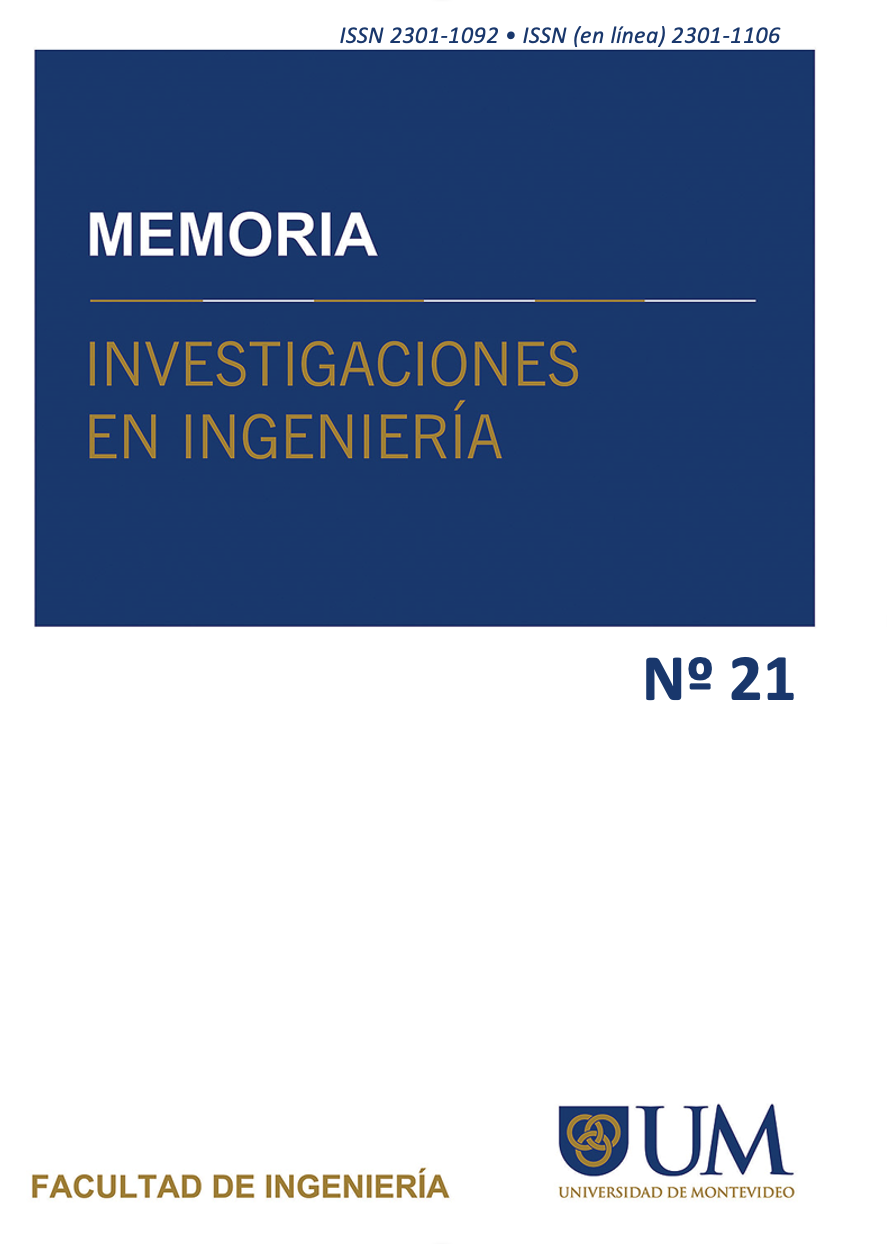Analyzing the use of blockchain for managing loading zones for urban distribution
DOI:
https://doi.org/10.36561/ING.21.10Keywords:
Blockchain, Urban freight transport, Loading/unloading areas, Urban logisticsAbstract
The lack of efficiency in the use of the on-street infrastructure dedicated to loading and unloading freight in the city, with their shortage and inefficient placement, generates congestion and delays during urban freight deliveries. An exploratory study is presented on the feasibility of incorporating technology into the management of dedicated loading/unloading areas for urban logistics in downtown Montevideo (Uruguay). After data of the neighborhood was collected, and the main stakeholder interest gathered, the paper analyzes a feasible technological solution to the problem, considering the restrictions posed by the stakeholders for sharing information. Due to the increasing influence of blockchain and its implementation for specific logistic problems, such as product traceability, the introduction of blockchain as part of the solution is considered and discussed in the system architecture
Downloads
References
Allende, M. (2021). Blockchain - LACCHAIN FRAMEWORK FOR PERMISSIONED PUBLIC BLOCKCHAIN NETWORKS. IDB. Obtained from:
Ballantyne, E. E., Maria, L., & Wheiteing Anthony. (2013). A comparative study of urban freight transport planning: addressing stakeholder needs. Journal of Transport Geography.
Obtenido de https://www.sciencedirect.com/science/article/pii/S0966692313001671
Berenguer, M., Da Silva, L., & Balassiano, R. (2004). Intelligent transportation systems and parking management: implementation potential in a Brazilian city. Cities, 21(2), 137-148. doi: https://doi.org/10.1016/j.cities.2004.01.001
Comi, A., Buttarazzi, B., Schiraldi, M. (2018). Smart urban freight transport: tools for planning and optimising delivery operations. Simulation Modelling Practice and Theory, 88, 48-61.
DHL, & Accenture. (2018). Blockchain in Logistics - Perspectives on the upcoming impact of blockchain technology and use cases for the logistics industry. Retrieved from https://www.logistics.dhl/content/dam/dhl/global/core/documents/pdf/glo-core-blockchaintrendreport.pdf
Fransoo, Jan C., Blanco, E. and Mejia-Argueta, C. (Eds.) (2017). Reaching 50 Million Nanostores: Retail Distribution in Emerging Megacities, CreateSpace Independent Publishing Platform, 440 pp.
Han, L., Chin, S., Franzese, O., & Hwang, H. (2005). Estimating the impact of pickup and delivery-related illegal parking activities on traffic. Transportation Research Record: Journal of the Transportation Research Board, 1906, 49–55
Innarella, R., Varisco, M., & Rosati, L. (2017). DynaLOAD: a simulation framework for planning, managing, and controlling urban delivery bays. Transportation Research Procedia, 22, 335-344. doi: https://doi.org/10.1016/j.trpro.2017.03.049Allende
Instituto Nacional de Estadística, Uruguay. (2011). Censos 2011. Retrieved 28 June 2018, from http://www.ine.gub.uy/web/guest/censos-2011
Kelli, L., Abreu, B., Dablanc, L., Ribeiro, K., Setsumb S. (2018) Distribuição Urbana de Mercadorias e Planos de Mobilidade de Carga Oportunidades para municípios brasileiros. BID. Doi: http://dx.doi.org/10.18235/0001169
Kijewska, K., Iwan, S., Nurnberg, M., Malecki, K. (2018) Telematic tools as the support for unloading bays utilization. Archives of Transport System Telematics. Löf, M. (2017). Decentralized Transactions in a Centralized Environment. A Blockchain Study Within the Transport Industry.
Malik, L., Sánchez-Díaz, I., Tiwari, G., & Woxenius, J. (2017). Urban freight-parking practices: The cases of Gothenburg (Sweden) and Delhi (India). Research In Transportation Business & Management, 24(1), 37-48. doi: https://doi.org/10.1016/j.rtbm.2017.05.002
Manzano dos Santos, E., & Sánchez-Díaz, I. (2016). Exploring Carriers' perceptions about
City logistics initiatives. Transportation Research Record: Journal of Transportation Research
Board, 2547, 66–73
McLeod, F., & Cherrett, T. (2011). Loading Bay Booking and Control for Urban Freight. Recuperado de https://doi.org/10.1080/13675567.2011.641525
Muñuzuri, J., Cortés, P., Guadix, J., & Onieva, L. (2012). City logistics in Spain: Why it might never work. Cities, 29(2), 133-141. doi: https://doi.org/10.1016/j.cities.2011.03.004
Muñuzuri, J., Larrañeta, J., Ibáñez, J. N., & Montero, G. (2006). Pilot demonstration of a web based loading zone reservation system. Recent advances in city logistics (pp. 401–415). Oxford: Elsevier
Perry, E., Oberhart, E., & Wagner, S. (2015). Truck Parking Management Systems: A
Synthesis of Projects, Research, and Resources for MAASTO Decision Makers. Recuperado de
Stickel, M., & Furmans, K. (2005). A web-based support tool to coordinate logistic activities
in densely populated areas using auctions. Recuperado de https://www.witpress.com/elibrary/wittransactionson-the-built-environment/77/14638
Taniguchi, E., Thompson, R. G., Yamada, T. y Van Duin, J. H. (2001) City logistics: Network modeling and intelligent transport systems. Elsevier Science
Venkatesh, V., Morris, M. G., Hall, M., Davis, G. B., & Davis, F. D. (2003). User acceptance of information technology: Toward a unified view. MIS Quarterly, 27(3), 425–478. https://doi.org/10.2307/30036540
Published
How to Cite
Issue
Section
License
Copyright (c) 2021 Martín Tanco, Daniel Jurburg, Pilar Menendez, Juan Andrés Topolansky, Felipe Algorta

This work is licensed under a Creative Commons Attribution 4.0 International License.






















